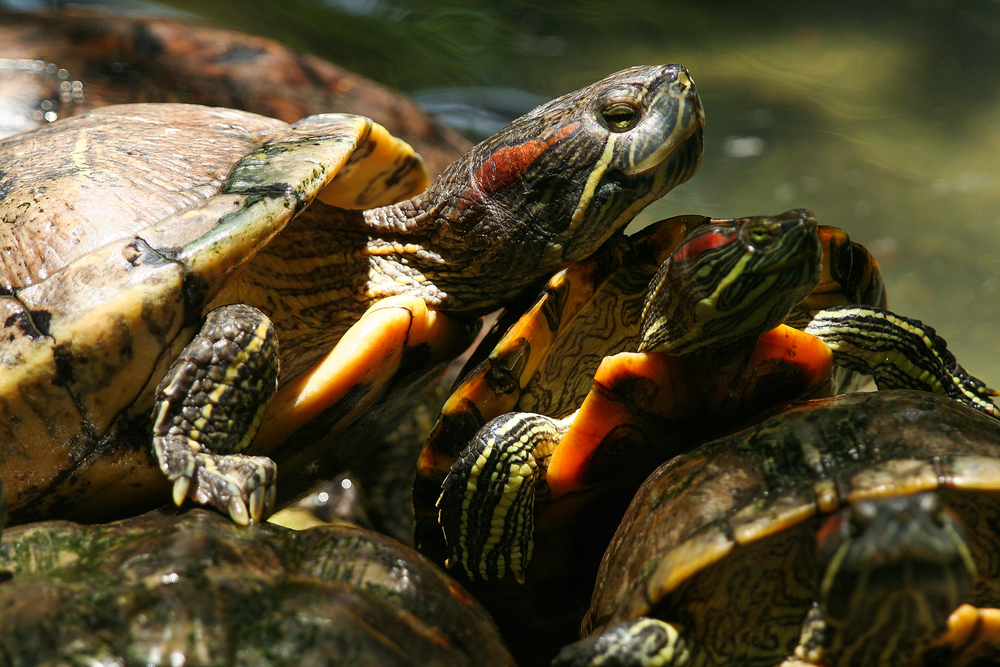Caring for African Sideneck Turtles can be a uniquely rewarding experience, offering a glimpse into the life of one of the most fascinating creatures in the aquatic world. These turtles, known for their distinctive necks which do not retract fully into their shells, require specific conditions to thrive. This article will guide you through everything from setting up the perfect habitat to understanding their dietary needs, ensuring your African Sideneck Turtles live a healthy and happy life.
Understanding African Sideneck Turtles
African Sideneck Turtles, scientifically known as *Pelusios castaneus*, originate from the freshwater bodies of Sub-Saharan Africa. They are medium-sized turtles, generally reaching about 7 to 12 inches in shell length. What sets them apart is their unique sideneck feature; instead of pulling their heads directly back into their shells, they bend their necks sideways beneath their shell edge.
Setting Up the Habitat
Aquarium Size and Water Conditions:
To begin, a suitable aquarium size for a young African Sideneck Turtle would be at least 40 gallons, with the need for larger tanks as they grow. Adult turtles thrive in tanks that are 75 to 100 gallons. The water quality is paramount—maintain a consistent water temperature between 72°F to 78°F and a pH level around 6.5 to 7.5. Install a robust filtration system to keep the water clean and clear, as turtles are messy eaters and can pollute their habitat quickly.
Lighting and Heating:
African Sideneck Turtles require a basking area with a temperature of about 85°F to 95°F. Use a UVB light to provide them with essential vitamin D3, which helps in calcium absorption, crucial for their shell and bone health. The basking light should shine for 10-12 hours a day to mimic natural sunlight.
Substrate and Decor:
When choosing a substrate, opt for large river rocks or a sandy gravel mix that they cannot easily ingest. Decorate the tank with aquatic plants, driftwood, and stones to provide hiding places and mimic their natural environment, enhancing their overall well-being.
Diet and Nutrition
African Sideneck Turtles are omnivorous and require a balanced diet of animal and plant materials. Young turtles tend to eat more protein-rich foods, which can include:
– Commercial turtle pellets, which are fortified with vitamins and minerals.
– Live or frozen foods such as shrimp, krill, and bloodworms.
– Small fish like guppies or minnows.
As they mature, their diet should include a higher proportion of plant material such as:
– Aquatic plants like duckweed and water lettuce.
– Slices of vegetables such as squash, carrots, and kale.
– Occasional fruits like apples and berries can be offered.
It’s important to provide a variety of foods to ensure they receive all necessary nutrients. Additionally, calcium supplements may be necessary to prevent shell deformities and other health issues.
Health Care and Maintenance
Regular check-ups with a veterinarian who specializes in reptiles are essential to maintaining the health of your African Sideneck Turtle. Be on the lookout for signs of illness, such as lethargy, swollen eyes, respiratory problems, or a loss of appetite, which could indicate infections or other health issues.
Cleaning the tank regularly is crucial to prevent the buildup of harmful bacteria and algae. Change 25% of the water weekly and clean the filter monthly. Inspect the basking area daily to ensure it is dry and clean, as a dirty basking area can lead to shell rot.
Interaction and Handling
African Sideneck Turtles can become accustomed to human interaction, but they are generally not fond of being handled. When handling is necessary, such as during tank cleaning or health checks, be gentle and quick. Always wash your hands before and after handling your turtle to prevent the spread of bacteria such as salmonella.
Conclusion
Proper care of African Sideneck Turtles demands attention to detail and a commitment to providing a stable and enriching environment. By setting up a proper habitat, maintaining clean living conditions, providing a balanced diet, and limiting handling, you can ensure your turtle remains healthy and vibrant for years to come. Remember, the key to successful turtle care is understanding their needs and behaviors, which makes the journey of caring for these unique creatures both fascinating and rewarding.
By adhering to these guidelines and continually educating yourself about the best practices in turtle care, you are sure to master the art of caring for African Sideneck Turtles, making your experience as a reptile enthusiast both enjoyable and fulfilling.

“Wannabe internet buff. Future teen idol. Hardcore zombie guru. Gamer. Avid creator. Entrepreneur. Bacon ninja.”



